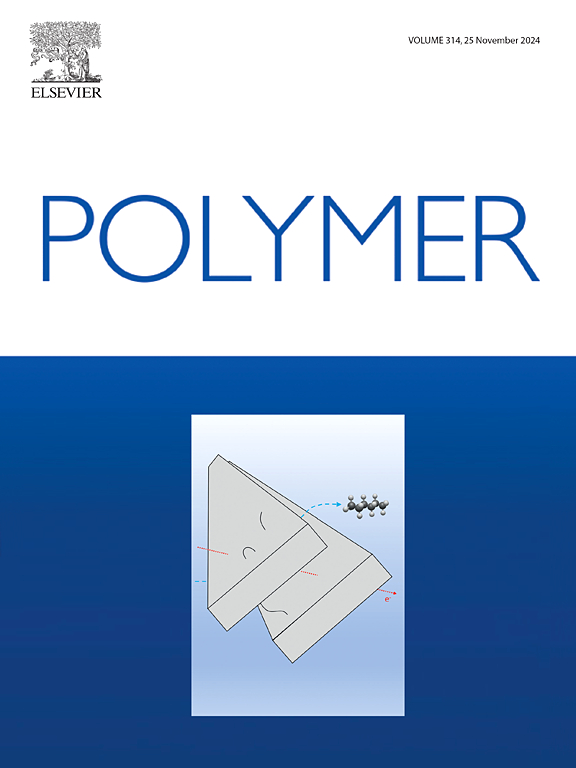The effect of diamine structure on the thermomechanical properties of epoxy resin thermosets
IF 4.1
2区 化学
Q2 POLYMER SCIENCE
引用次数: 0
Abstract
Structure and composition are two essential components that affect the properties of the polymeric thermoset. In this paper, we studied the effect of the diamine structure on thermoset properties by synthesizing a series of epoxy-based thermosets composed of hardeners with almost equivalent molecular weights, including diaminooctane (DAO), Jeffamine-EDR, para-xylylenediamine (p-XDA), and meta-xylylenediamine (m-XDA). The structural and thermomechanical properties of the cured thermosets were characterized by attenuated total reflectance Fourier-transform infrared spectroscopy (ATR-FTIR), x-ray diffraction (XRD), thermogravimetric analysis (TGA), differential scanning calorimetry (DSC), and dynamic mechanical analysis (DMA). These thermosets with amorphous structures, confirmed by XRD, were fully cured and crosslinked according to FTIR results. All thermosets demonstrated high thermal stability above 376 °C, with aromatic thermosets showing the highest char yield. The sample cured with m-XDA exhibited the highest glass transition temperature according to the DMA results, which were in agreement with the DSC results.

求助全文
约1分钟内获得全文
求助全文
来源期刊

Polymer
化学-高分子科学
CiteScore
7.90
自引率
8.70%
发文量
959
审稿时长
32 days
期刊介绍:
Polymer is an interdisciplinary journal dedicated to publishing innovative and significant advances in Polymer Physics, Chemistry and Technology. We welcome submissions on polymer hybrids, nanocomposites, characterisation and self-assembly. Polymer also publishes work on the technological application of polymers in energy and optoelectronics.
The main scope is covered but not limited to the following core areas:
Polymer Materials
Nanocomposites and hybrid nanomaterials
Polymer blends, films, fibres, networks and porous materials
Physical Characterization
Characterisation, modelling and simulation* of molecular and materials properties in bulk, solution, and thin films
Polymer Engineering
Advanced multiscale processing methods
Polymer Synthesis, Modification and Self-assembly
Including designer polymer architectures, mechanisms and kinetics, and supramolecular polymerization
Technological Applications
Polymers for energy generation and storage
Polymer membranes for separation technology
Polymers for opto- and microelectronics.
 求助内容:
求助内容: 应助结果提醒方式:
应助结果提醒方式:


